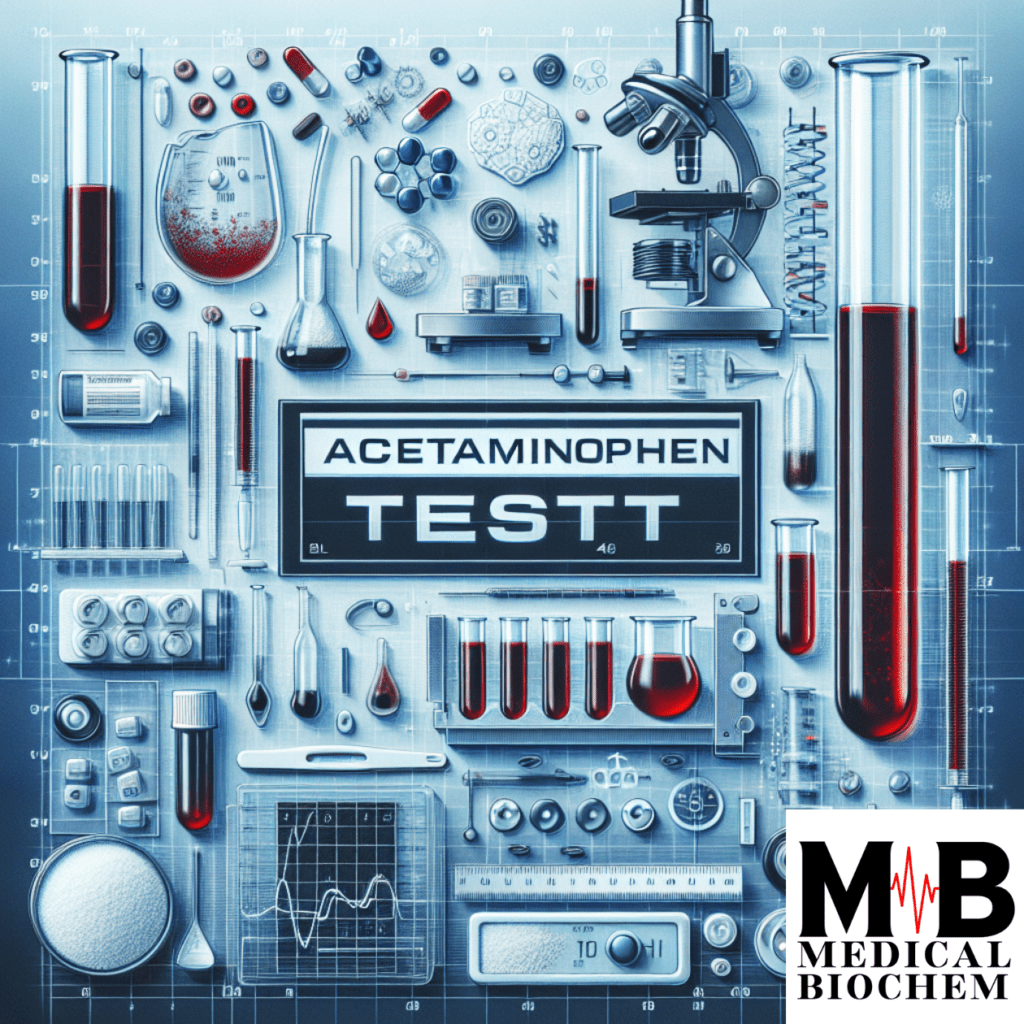Procedure and Methods for Acetaminophen Level Test
Purpose of the Test:
The acetaminophen level test measures the amount of acetaminophen (paracetamol) in the blood. This test is vital for diagnosing acetaminophen overdose, which can lead to serious liver damage if not detected and treated promptly.
Table of Contents
Procedure for Acetaminophen Level Test
- Preparation:
- No specific preparation is required for the test.
- Patients should inform their healthcare provider of any medications they have taken, especially acetaminophen.
- Blood Sample Collection:
- Timing of the Test:
Four hours after acetaminophen ingestion, the test is usually conducted to ensure accurate measurement. This is when acetaminophen reaches peak levels in the bloodstream. - Venipuncture:
A healthcare professional will draw a blood sample from a vein, usually in the arm, using a sterile needle. A small amount of blood (around 2–5 mL) is collected into a tube for analysis. - Labeling and Handling:
A laboratory technician receives and carefully labels the patient’s sample for testing. Proper handling is crucial to ensuring sample integrity.
- Timing of the Test:
Methods for Acetaminophen Level Test
The most common methods used in the laboratory to measure acetaminophen levels are:
- Immunoassay Testing:
- Description:
Immunoassay is one of the most widely used techniques for measuring acetaminophen. It uses antibodies to bind with acetaminophen in the blood, allowing for detection. - Advantages:
- Quick results (often within an hour).
- Highly sensitive and specific.
- Process:
An automated system processes blood samples. The system detects the reaction between acetaminophen and antibodies. It gives a quantitative result.
- Description:
- High-Performance Liquid Chromatography (HPLC):
- Description:
HPLC is a more precise method that separates and measures acetaminophen in the blood. It’s often used in complex cases. - Advantages:
- Very accurate and can detect even small amounts of acetaminophen.
- Can differentiate acetaminophen from other substances.
- Process:
A column filters blood, separating acetaminophen from other components. The detector measures the concentration of the drug.
- Description:
- Gas Chromatography-Mass Spectrometry (GC-MS):
- Description:
GC-MS is an advanced technique combining gas chromatography to separate compounds and mass spectrometry to measure acetaminophen. - Advantages:
- Extremely accurate and can detect low concentrations of acetaminophen.
- Used in forensic and complex medical cases.
- Process:
The mass spectrometer determines the mass-to-charge ratios of acetaminophen components in the blood after vaporizing and separating them in a gas chromatograph.
- Description:
Interpreting the Results:
- Normal Levels:
In therapeutic doses, acetaminophen levels should remain below toxic thresholds. - Toxic Levels:
A blood concentration of 150–200 mcg/mL or higher at 4 hours post-ingestion indicates potential toxicity and the risk of liver damage. - Using the Rumack-Matthew Nomogram:
The test results are interpreted using a nomogram. This nomogram estimates the risk of liver injury based on acetaminophen levels. It also takes into account the time since ingestion.
Follow-Up and Treatment:
- If toxic levels are detected, administer N-acetylcysteine (NAC) to prevent liver damage.
- Frequent checks of liver function tests such as ALT and AST are essential for evaluating any liver harm resulting from an overdose.
Conclusion
The acetaminophen level test is a crucial diagnostic tool, especially in cases of suspected overdose. By measuring the concentration of acetaminophen in the blood, healthcare providers can determine the risk of liver damage and administer life-saving treatment promptly. Methods like immunoassay, HPLC, and GC-MS ensure accurate and timely results, enabling effective management of acetaminophen toxicity. Early detection through this test is key to preventing long-term complications and ensuring patient safety.
Learn the procedures, methods, and importance of acetaminophen level tests to detect overdoses and prevent liver damage. Early diagnosis can save lives.
Are you using acetaminophen regularly? Don’t risk your liver health. Schedule an acetaminophen level test today to ensure you’re within safe limits. Talk to your healthcare provider to learn more about how these tests can protect your well-being.


